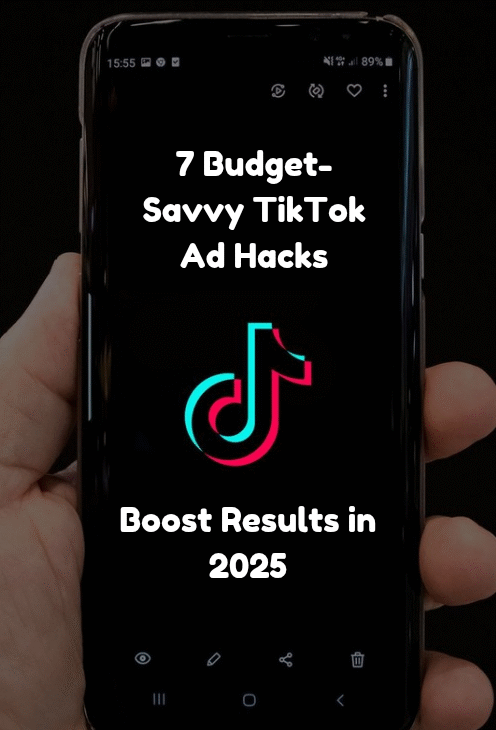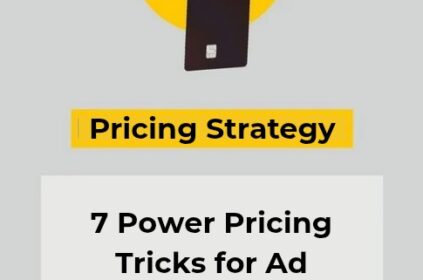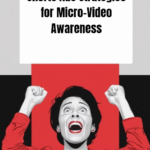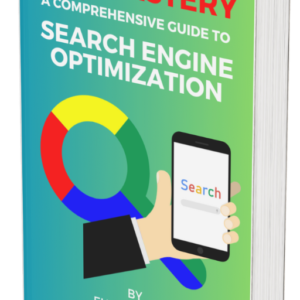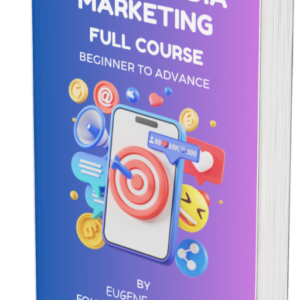TikTok has quickly evolved from a viral video app into one of the most influential advertising platforms for brands of all sizes.
In 2025, short-form video continues to dominate consumer attention, with TikTok capturing over 1.5 billion monthly active users worldwide according to DataReportal.
What makes the platform even more appealing is its unique algorithm, which allows brands with modest budgets to generate outsized visibility if they approach campaigns with strategy and discipline.
Running ads on TikTok can feel daunting for smaller businesses, especially when marketing teams worry that large competitors with deeper pockets will always outspend them.
Yet, the truth is that results on TikTok don’t rely solely on budget. Creativity, targeting, and data-driven adjustments can often outweigh raw spend. This is where TikTok Ad Hacks come into play.
These approaches help advertisers streamline costs, minimize wasted impressions, and achieve consistent engagement without overshooting their budget.
#1: Optimizing Creative for Scroll-Stopping Impact
The first of our TikTok Ad Hacks focuses on creative performance. Success on TikTok starts with capturing attention within the first two seconds.
Research by TikTok for Business shows that 63% of users say they notice ads that blend seamlessly with organic content more than polished, traditional ads.
For low-budget brands, this means professional studios are not necessary. Instead, prioritize authentic, native-feeling videos.
Effective creative optimization involves a few consistent practices. Begin by using vertical 9:16 aspect ratio with high resolution to ensure clarity on mobile devices.
Add captions because more than 85% of TikTok videos are viewed with sound off in some contexts.
Most importantly, deliver your key value proposition within the first three seconds—whether it’s a product benefit, a unique offer, or a striking visual.
Testing is essential. Upload multiple creative variations targeting the same audience, then track which ones achieve higher click-through rates (CTR) and lower cost per acquisition (CPA).
Brands that rotate at least three creatives per campaign are known to see 35% better engagement compared to campaigns with only one video.
This hack doesn’t just save money—it ensures that even a small spend drives strong initial impressions. Without optimized creatives, even the smartest targeting will underperform.
#2: Leveraging TikTok Spark Ads for Authentic Reach
Among the most effective TikTok Ad Hacks is the use of Spark Ads.
These allow brands to boost existing organic posts from creators or their own accounts rather than running ads that feel separate from the community experience.
The result is authentic reach, higher engagement, and often lower CPMs.
According to TikTok for Business, Spark Ads generate 24% higher completion rates compared to non-Spark in-feed ads.
For low-budget brands, this is particularly powerful because it reduces the need for producing polished ad creatives.
Instead, you can collaborate with micro-influencers, gain permission to boost their posts, and instantly expand visibility while maintaining a natural, peer-to-peer feel.
To implement this hack, identify creators who already align with your niche. Negotiate usage rights so you can activate Spark Ads directly from their content.
Then, target audiences similar to their organic followers. This strategy maximizes authenticity while stretching limited ad spend.
For brands under pressure to prove ROI, Spark Ads provide a cost-effective middle ground between influencer marketing and paid campaigns.
#3: Using Audience Insights to Target Smarter
Another crucial component of TikTok Ad Hacks is making full use of TikTok’s Audience Insights tool.
Launched in 2023, it provides advertisers with granular data on audience demographics, interests, and behavior.
Low-budget brands can’t afford broad, unfocused targeting. Audience Insights ensures that every dollar is directed toward the right viewers.
For example, if your product appeals to eco-conscious consumers, Insights can reveal audience overlap with sustainability hashtags, green lifestyle communities, and related product categories.
This helps refine targeting into custom segments with higher purchase intent. Combined with TikTok’s lookalike audiences, you can scale to new users who share traits with your highest-value customers.
A report by TikTok for Business found that campaigns using TikTok’s first-party targeting tools achieved 33% lower CPA compared to third-party data sets.
For marketers with strict budgets, this reduction is significant. Instead of guessing, you’re applying real behavioral data to shape campaigns.
The hack lies not just in using Insights but also in refreshing the data regularly. TikTok trends shift quickly, and monthly updates ensure you’re always targeting where attention flows next.
#4: Repurposing UGC into Paid Ads
User-generated content (UGC) continues to dominate short-form platforms, and it is one of the most cost-efficient TikTok Ad Hacks available.
Instead of investing heavily in scripted shoots, encourage your customers to create videos showcasing how they use your products.
Authentic testimonials often outperform brand-generated ads, with a study reporting that 92% of consumers trust recommendations from individuals over brand ads.
Repurposing UGC into paid ads multiplies value. By negotiating usage rights, brands can extend the lifespan of organic videos into scalable advertising assets.
For instance, a skincare company might boost a customer’s “before-and-after” clip, then retarget warm audiences who engaged with it.
This provides both authenticity and a continuous funnel without overspending on creatives.
Moreover, TikTok’s algorithm favors ads that mimic organic posting styles. UGC achieves precisely that.
By layering call-to-action overlays, discount codes, or branded hashtags, you can transform a customer video into a high-performing paid asset.
For brands under budget pressure, this hack reduces production costs while sustaining high trust.
#5: Testing Low-Budget Campaign Structures
One of the most underrated TikTok Ad Hacks involves campaign structuring. Many advertisers mistakenly think they need large budgets to generate useful data.
However, TikTok’s auction model allows meaningful testing at $20–$50 per campaign. The key is how you structure these tests.
Start with split testing across variables such as creative type, call-to-action buttons, and targeting groups.
By keeping budgets small, you can identify winning combinations before scaling.
For example, test whether “Shop Now” outperforms “Learn More,” or whether a product demo outperforms a testimonial.
Each test should run long enough to collect statistically valid results but not so long that it drains resources.
According to WordStream’s paid media benchmarks, brands that A/B test at least two variables per campaign reduce wasted spend by 28%.
For low-budget teams, this represents meaningful savings. Once winners are identified, gradually scale spend toward top-performing combinations while cutting underperformers.
This disciplined approach ensures that you avoid burning through the budget blindly. Instead, you refine campaigns strategically and expand only after results prove reliable.
#6: Retargeting Warm Audiences Efficiently
Another critical addition to the list of TikTok Ad Hacks is retargeting.
Acquiring new impressions is expensive, but retargeting users who have already engaged with your content is far more cost-effective.
TikTok’s Pixel and in-app events make this simple to execute.
For instance, you can create retargeting audiences from people who watched at least 75% of a video, clicked on your profile, or visited your website.
These users have already signaled intent. Converting them typically requires less spend than cold outreach.
By serving them a follow-up ad—such as a limited-time offer or testimonial—you close the gap between interest and purchase.
Research indicates that retargeted ads increase conversion rates by up to 70% compared to prospecting alone.
For small brands, that efficiency can be the difference between profitability and wasted spend.
When budgets are tight, allocate at least 30% of your ad spend to retargeting pools.
This ensures your campaigns are not chasing cold leads endlessly but focusing resources on audiences already primed to convert.
#7: Leveraging TikTok Trends Without Overspending
The final hack in this list of TikTok Ad Hacks addresses the platform’s constantly shifting trend culture.
Jumping on every trend may seem like a shortcut to visibility, but it can also waste money if not approached strategically.
Instead, selectively engage with trends that directly connect to your brand’s niche.
Start by monitoring TikTok’s Creative Center, which publishes real-time trend reports across songs, hashtags, and formats.
Choose trends that allow your product or service to integrate naturally. For example, if a trending sound relates to fitness routines, a sportswear brand can adapt it into a product demo.
This approach ensures alignment without forcing creativity or overspending.
Trends also provide low-cost visibility because the algorithm boosts fresh, high-engagement formats.
Brands that adapt quickly often see organic lift, which can then be amplified with modest ad spend.
A HubSpot marketing report highlighted that brands leveraging platform-native trends saw engagement rates 45% higher than static campaigns.
The hack lies in prioritizing relevance over frequency. By engaging with trends selectively, you achieve maximum impact with minimum waste—essential for lean ad budgets.
Scaling TikTok Ad Hacks Across Multiple Campaigns
Implementing TikTok Ad Hacks is valuable, but the real power lies in scaling them consistently.
Once you’ve tested and refined your creative, targeting, and retargeting strategies, replicate them across product lines, markets, and seasonal campaigns.
Scaling doesn’t mean simply increasing budgets. It means identifying the best-performing ad structures, then applying them to new campaigns with slight adjustments.
For instance, if Spark Ads from micro-influencers consistently deliver low CPAs, scale this by onboarding more creators within your budget range.
Similarly, if retargeting delivers reliable ROAS, allocate incremental spend there first before cold prospecting.
The advantage of disciplined scaling is predictability. Over time, your campaigns build historical performance data that improves forecasting accuracy.
With consistent execution, even small businesses can create a sustainable ad engine rather than one-off wins.
Avoiding Common Pitfalls That Drain Budgets
Even with strong TikTok Ad Hacks, certain mistakes can erase gains quickly. One common error is failing to track conversions properly.
Without the TikTok Pixel or server-side API enabled, brands may overestimate campaign success based on views or likes, missing whether those interactions drive sales.
Always integrate accurate attribution before scaling spend.
Another pitfall is overproducing polished content. While it may look appealing, it often underperforms compared to authentic, raw videos.
Overspending here drains resources better used in testing or amplification.
Compliance is another risk: failing to disclose partnerships with influencers can trigger penalties under updated FTC guidelines.
Finally, avoid set-and-forget campaign management. TikTok’s algorithm rewards adaptability.
Allowing underperforming ads to run unchecked inflates CPAs and erodes ROI. Automated rules can help pause or shift budget quickly, ensuring that you always maximize efficiency.
Conclusion
TikTok has leveled the playing field for brands with limited resources.
By applying the right TikTok Ad Hacks, marketers can stretch their budgets, achieve authentic engagement, and drive measurable results in 2025.
From optimizing creative and leveraging Spark Ads to using insights, UGC, and retargeting, each hack provides a proven method to boost efficiency.
The path forward is not about outspending competitors but about outsmarting them.
With disciplined testing, careful scaling, and consistent trend monitoring, even low-budget brands can thrive on TikTok.
What matters is aligning every dollar with strategies that convert—so your campaigns deliver sustainable growth rather than fleeting impressions.
As the platform continues to evolve, brands that apply these hacks will maintain an edge, proving that smart marketing beats big budgets when executed with precision.

